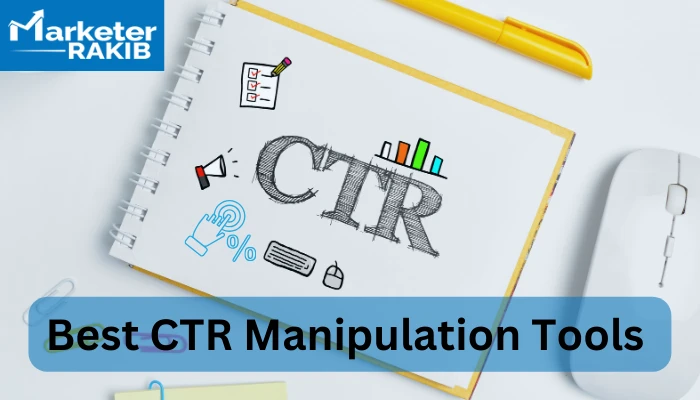GMB CTR Manipulation Explained: What You Required to Know
GMB CTR Manipulation Explained: What You Required to Know
Blog Article
The Role of CTR Adjustment in Achieving Higher Conversion Fees
In the elaborate globe of electronic marketing, the control of Click-Through Fees (CTR) stands as a critical aspect in the mission for attaining greater conversion prices. The capability to lure users to interact with advertisements through engaging messaging and calculated positioning holds the vital to unlocking a domino effect that results in raised conversions. Nonetheless, just like any advertising and marketing method, the effectiveness of CTR control pivots not just on the first engagement but additionally on the smooth shift in the direction of conversion. This delicate balance between enticing clicks and supporting conversions is where truth significance of CTR control unravels, shaping the trajectory of campaign success.
Significance of CTR in Conversions
The click-through rate (CTR) plays a pivotal role in establishing the success of conversion prices for on-line projects. A high CTR shows that the advertisement or content is resonating well with the audience, driving website traffic to the web site or touchdown web page.
Monitoring and maximizing CTR is essential for taking full advantage of the performance of on the internet projects. A reduced CTR can show that the ad is not pertinent to the target market, the messaging is uncertain, or the innovative aspects are not involving. By assessing CTR data and making adjustments to improve efficiency, marketing experts can increase the possibility of attracting certified leads and driving conversions. Eventually, a solid CTR is a vital part in attaining successful conversion prices and making the most of the return on investment in on the internet advertising efforts.

Aspects Influencing CTR Manipulation
When checking out the world of online advertising and marketing, numerous variables come right into play when thinking about the adjustment of Click-Through Fees (CTR) One significant element affecting CTR control is advertisement relevance. Making sure that the ad web content aligns with the audience's rate of interests and needs boosts the likelihood of users clicking on the advertisement. Moreover, the placement of the advertisement on the page influences CTR. Advertisements positioned prominently where they are conveniently visible have a tendency to attract even more clicks contrasted to those placed in less recognizable areas.
The phrasing and style of the ad likewise play an essential role in CTR manipulation. Crafting engaging advertisement copy that lures individuals to click and including eye-catching visuals can considerably impact CTR. Additionally, the targeting of ads to details demographics or passions can boost CTR by getting to the appropriate audience with appropriate web content. Aspects like the timing of the advertisement display screen, the device being made use of, and even exterior aspects such as seasonality can also affect CTR control. Understanding and leveraging these variables can aid marketers optimize their projects for higher conversion rates.
Methods to Enhance CTR
Exploring reliable approaches to improve Click-Through Fees (CTR) in online advertising entails a comprehensive understanding of the variables affecting customer engagement with advertisements. One key method is crafting engaging ad copy that is clear, succinct, and pertinent to the target audience. Using solid call-to-action expressions can trigger individuals to click on the advertisement, boosting the CTR. Additionally, including relevant keyword phrases and enhancing ad positioning can bring in even more clicks. A/B testing various advertisement variants permits the identification of one of the most effective messaging and design components that reverberate with customers, causing improved CTR.
Furthermore, maximizing landing pages to align with advertisement web content and ensuring click over here now rapid filling times can improve individual experience, motivating users to click through. Implementing advertisement extensions, such as sitelinks and callouts, provides extra information to customers and raises the presence and charm of the ad. Leveraging retargeting techniques to reach users who have formerly engaged with the ad can also enhance CTR by reconnecting with interested audiences. By implementing these techniques thoughtfully, marketers can successfully enhance CTR and drive greater conversion rates.
Surveillance and Analyzing CTR Data
Evaluating and keeping track of Click-Through Rate (CTR) data is necessary for reviewing the efficiency of on-line marketing campaign. By closely analyzing CTR information, marketing professionals can gain beneficial understandings right into the performance of their advertisement creatives, targeting strategies, and overall project efficiency. Checking CTR fads with time can aid recognize patterns, enhance campaigns in real-time, and make data-driven decisions to boost click-through prices.

Routinely monitoring and evaluating CTR information enables marketers to adapt their approaches, improve targeting methods, and inevitably enhance project efficiency to accomplish higher conversion rates. LinkDaddy CTR Manipulation.
Effect of CTR on Conversion Rates

Conclusion
Finally, CTR control plays an essential function in attaining higher conversion rates by enhancing ad significance and visibility. By assessing and boosting aspects such as ad duplicate, visuals, and positioning, marketers can increase customer interaction and clicks. It is necessary to guarantee that the touchdown web page experience aligns with the ad's browse around these guys guarantee to make best use of conversions. Tracking and assessing CTR data is crucial for effective project end results.
Report this page